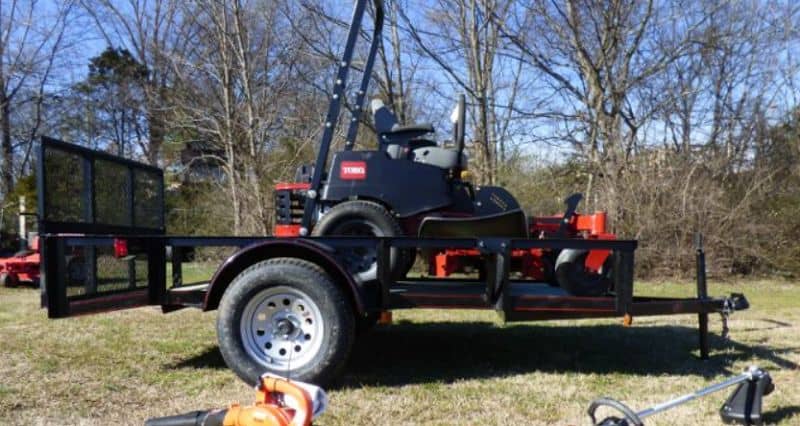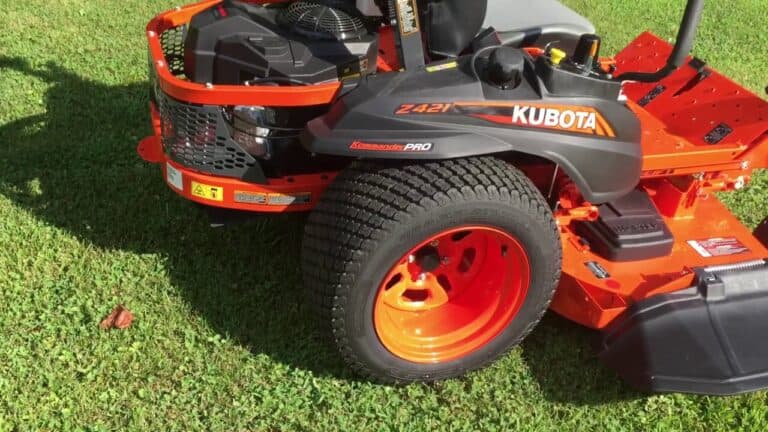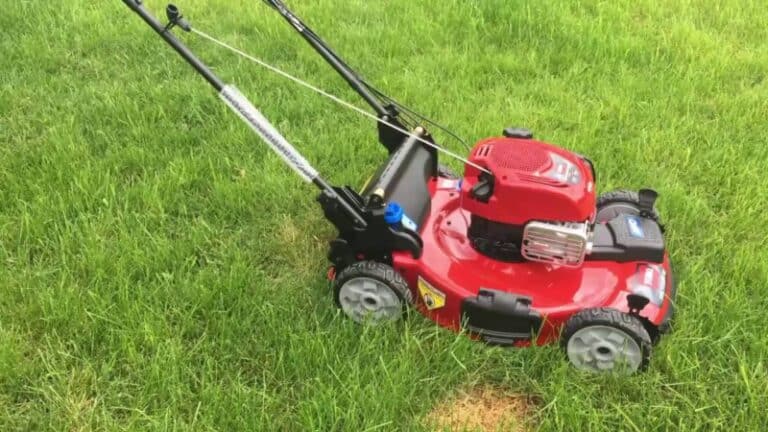A Trailer Size Guide for a 48-Inch Lawn Mower

How much of a trailer do I need for a 48-inch mower? A trailer no bigger than 5 feet or 8 inches would work. However, there more information is required to ensure a good match.
In order to properly use a lawnmower, you must first be familiar with its precise dimensions. For example, a mower with a 48-inch cutting deck is designed to mow a grassy area 48 inches wide. As a result, you should first consider the size of the deck.
This article will help you decide how big of a trailer you need and explain why. So let’s go right into the answer without further ado.
Trailer Dimensions for a 48-Inch Lawnmower
A 48-inch mower requires a trailer of between 5 feet and 10 feet in length. When it comes to size, this one will be manageable for the mower, allowing for a simple draw-out.
Even with this, determining the correct mower trailer size might be challenging. Be sure to double-check the mower deck dimensions and any other specifications before purchasing a trailer.
Numerous mowers have decks that are wider than they are long. However, the following section will assist you in deciding to purchase a spinning mower trailer for your horticulture interests.
Investing in a 48-inch Mower Trailer
Many trailer buyers believe that the larger the trailer, the better. This is because it has enough space for lawnmowers and other equipment. If money is limited, though, or if you’re still set on having the same model, the one shown here is a safe bet.
However, a trailer’s breadth is equally as critical as its length. So make sure the multipurpose trailer you’re considering purchasing can accommodate the length and breadth of your mower.
Helpful Tips You Might Consider
Here is what to consider when Investing in a 48-inch Mower Trailer.
1. Length and Width
A trailer needs adequate space to accommodate the weight and size of the equipment you plan to transport. A good rule of thumb is that a trailer should be longer than it is wide. This way, you can fit more in the trailer without having to worry about hitting the walls or the ceiling.
Also, if you are planning on transporting multiple mowers and other equipment at once, make sure the trailer you are considering buying has ample space for you to add more items.
2. Wheels and Tires
The wheels and tires are the most critical aspect of a trailer. If the trailer doesn’t have good traction, then it could be unsafe to transport loads such as mowers, snow blowers, and other equipment.
Some trailers come with four wheels, but you’ll find most trailers at least 16 inches wide come with two front tires. Therefore, it’s best to check the wheels before buying the trailer. The wheels of the trailer should be sturdy and well-constructed.
3. Lift Assist
As mentioned above, the length and width of your trailer should play an essential role in the lift assistance you need. You can find lift assist systems made of many materials, such as rubber, steel, and even aluminum. When choosing the right trailer, you can use the lift assist to lift your heavy equipment without straining your back and muscles.
4. Tongue Weight
Most people will find that their tongue weight is the most prominent feature of their trailer. This weight determines the size of the trailer that will suit their needs. If you are a smaller individual, you’ll need a smaller trailer.
If you have a larger trailer, you can adjust it to make it longer and bigger. The weight is determined by a large number of things, including material quality, wheelbase and tires, and whether or not it has a tongue weight.
5. Brakes
The trailer you buy should have brakes in place. These are necessary because they will allow you to stop the trailer whenever you need to, thus preventing you from accidentally bumping into a wall or some other obstacle.
While the brakes on a trailer are usually not as important as those on its wheels, they still play an essential role in the ease with which you can control the trailer while driving. Good brakes will make pulling and pushing the trailer much more manageable.
The best part is it is easy to add brakes to any trailer. Take off the wheels, replace them with new brakes, and then put the new wheels back on. Some trailers come equipped with brakes already, so you may not need to do anything else.
6. Axle Number and Size
The axle number refers to the diameter of the wheel or tires that the trailer will use. There are three sizes used for trailers: 3 inches, 5.5 inches, and 8 inches.
For example, a 3-inch axle is small enough to fit any standard wheel on a car or truck—however, the larger the axle diameter, the better the traction on the wheels. Thus, if you are looking for a trailer with a high center of gravity, look for an 8-inch axle since it has the most increased ground clearance.
7. LED Lights
The ability to move around in the dark is an important safety feature of any mower trailer. Some trailers come with lighting systems that allow you to see what you are doing, even in poor lighting conditions.
If this is not the case, you can opt for LED lights that are also less costly than traditional incandescent ones. They last longer, use less power and consume less space when compared to standard incandescent lights.
8. Locking Features
Most modern trailers have locking mechanisms so that you can secure them safely while moving from one location to another. In addition to being safe, these locking features also make it easier for you to load and unload your equipment because you won’t have to fight with a heavy trailer whenever you want to load or unload something.
Frequently Asked Questions
How much of a trailer would be needed for a riding lawn mower?
The total weight of the cargo should determine trailer dimensions. For example, a trailer of 4 or 5 feet in length should be sufficient for transporting a lawn mower and related accessories. However, a trailer of at least 6 or 7 feet in length will be required to transport a larger mower.
Can a full-sized bed be accommodated in a U-Haul trailer 5 feet by 8 feet?
Any moving truck 10 feet or longer, cargo van, and 5’x8′ cargo trailer will accommodate a full-size bed. In addition, these U-haul trailers can accommodate a variety of mattress sizes.
What factors determine the maximum trailer weight?
Knowing how much weight can be safely transported in the trailer will help you choose the right trailer. Subtract the trailer’s unloaded weight from the GVWR. The result is the maximum weight that can be hauled by the trailer. Keep the trailer’s maximum weight capacity in mind and avoid going over it.
You can also read:






